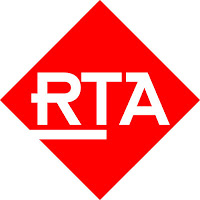 Can you have an acidosis with normal serum bicarbonate? Of course you
Can you have an acidosis with normal serum bicarbonate? Of course youcan, it’s just incomplete. Incomplete distal renal tubular acidosis (idRTA)
that is.
RTA was first described in 1935, confirmed as a renal tubular disorder
in 1946, and designated “renal tubular acidosis” in 1951 (see here for an excellent
review). Now it gets complicated, not only with regard to nomenclature but also
with mechanisms.
in 1946, and designated “renal tubular acidosis” in 1951 (see here for an excellent
review). Now it gets complicated, not only with regard to nomenclature but also
with mechanisms.
I was a little surprised to hear that you can have distal RTA with a
normal bicarbonate. It is just disguised. Patients with incomplete distal RTA
have persistently high urine pH but are still able to excrete acid under normal
conditions (therefore the normal serum bicarbonate). However, in states of high
acid loads (high protein diet, catabolic stress) they are unable to excrete
that acid which then triggers alkali release from the bone and thus causes
greater bone resorption, therefore these patients have frequently osteopenia
and osteoporosis.
normal bicarbonate. It is just disguised. Patients with incomplete distal RTA
have persistently high urine pH but are still able to excrete acid under normal
conditions (therefore the normal serum bicarbonate). However, in states of high
acid loads (high protein diet, catabolic stress) they are unable to excrete
that acid which then triggers alkali release from the bone and thus causes
greater bone resorption, therefore these patients have frequently osteopenia
and osteoporosis.
Distal RTA occurs with a number of conditions, amongst them
classically Sjogrens syndrome but also other autoimmune conditions. Cisplatin
has been mentioned as one of the causes of idRTA in this blog earlier. idRTA is a common cause of nephrocalcinosis – with or without
stones – and it has a number of prominent victims as also mentioned in a
previous post.
classically Sjogrens syndrome but also other autoimmune conditions. Cisplatin
has been mentioned as one of the causes of idRTA in this blog earlier. idRTA is a common cause of nephrocalcinosis – with or without
stones – and it has a number of prominent victims as also mentioned in a
previous post.
idRTA can be diagnosed by induction of a systemic metabolic acidosis
by means of acid loading. This is commonly done with ammonium chloride (NH4Cl)
but there is also a furosemide and fludrocortisone test that apparently causes
less abdominal discomfort. Failure to acidify urine to a pH of less than
5.3 is consistent with incomplete distal renal tubular acidosis. However,
testing is a little bit tedious and therefore not commonly done. The urinary
citrate is commonly low in dRTA which contributes to nephrocalcinosis and stone
formation.
by means of acid loading. This is commonly done with ammonium chloride (NH4Cl)
but there is also a furosemide and fludrocortisone test that apparently causes
less abdominal discomfort. Failure to acidify urine to a pH of less than
5.3 is consistent with incomplete distal renal tubular acidosis. However,
testing is a little bit tedious and therefore not commonly done. The urinary
citrate is commonly low in dRTA which contributes to nephrocalcinosis and stone
formation.
A recent study from Switzerland showed that 6.7% of 150 male
recurrent calcium stone formers (RCSFs) had idRTA, i.e., 1 out of 15 male RCSFs
can be expected to have idRTA. They therefore suggest that idRTA is overall underdiagnosed.
recurrent calcium stone formers (RCSFs) had idRTA, i.e., 1 out of 15 male RCSFs
can be expected to have idRTA. They therefore suggest that idRTA is overall underdiagnosed.
Posted by Florian Toegel



The Renal Association is involved in many joint activities, and liaises with many other relevant groups. Some of the organisations with which we share formal committees are: – renal exam course